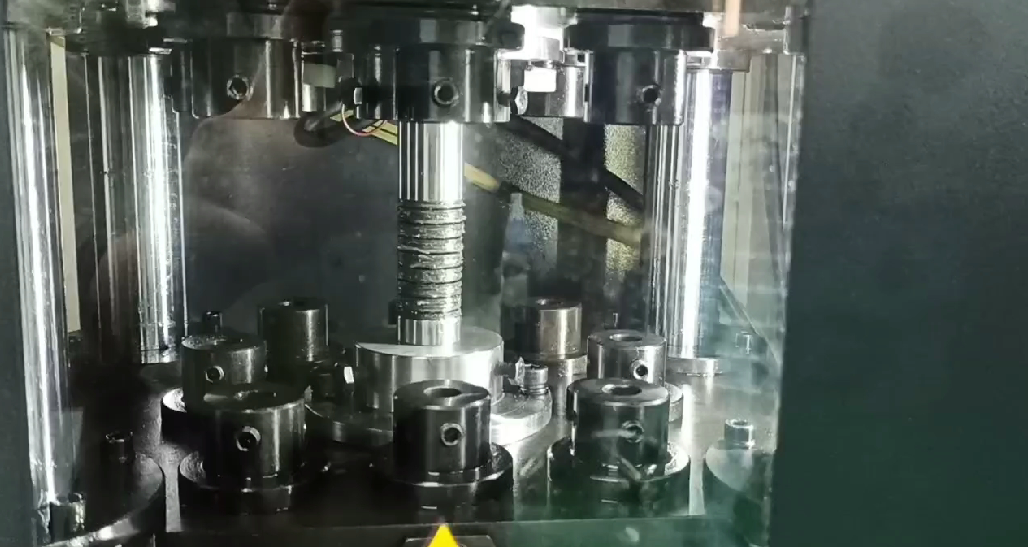يتضمن اختبار الكلال على النوابض القرصية إخضاع هذه المكونات الميكانيكية لدورات متكررة من التحميل والتفريغ لتقييم قدرتها على التحمل وأدائها في ظل ظروف التحميل الدورية.
إليك كيفية عمل اختبار التعب على الينابيع العادة:
إعداد الاختبار:
إعداد العينات: يتم اختيار نوابض القرص من المادة والأبعاد المطلوبة للاختبار.
معدات اختبار: لدى Tianjin Simflex جهاز اختبار خاص به لإجراء اختبار التعب. يطبق الجهاز أحمالًا دورية على ربيع القرص أثناء مراقبة عدد الدورات والحمل المطبق.
إجراء الاختبار:
1. الحالة الأولية: يتم وضع ربيع القرص في آلة الاختبار, ويتم تطبيق الحمل الأولي. يمكن أن يكون هذا الحمل بمثابة تحميل ثابت أو خطوة التحميل المسبق لتقليد ظروف العالم الحقيقي.
2. التحميل الدوري: ثم تقوم آلة الاختبار بتطبيق دورات التحميل والتفريغ على ربيع القرص. تتضمن دورة التحميل زيادة الحمل في الربيع, تسبب في ضغط أو انحراف. تتضمن دورة التفريغ تقليل الحمل أو إزالة الحمل, السماح للربيع بالعودة إلى شكله الأصلي.
3. عدد الدورة: يستمر الاختبار لعدد محدد من الدورات, التي يمكن أن تتراوح من بضعة آلاف إلى الملايين, اعتمادًا على التطبيق المقصود والمستوى المطلوب لتقييم حياة التعب.
4. يراقب: خلال الاختبار, تتم مراقبة المعلمات المختلفة, بما في ذلك الحمل المطبق, انحراف أو ضغط الربيع, وعدد الدورات المكتملة. تساعد هذه القياسات في تقييم سلوك الربيع وأداءها بمرور الوقت.
جمع البيانات:
1. بيانات الإجهاد: عن طريق قياس الحمل المطبق والانحراف المقابل أو ضغط ربيع القرص, يمكن الحصول على بيانات الإجهاد. توفر هذه البيانات نظرة ثاقبة على سلوك المواد في الربيع تحت التحميل الدوري.
2. حياة التعب: الهدف الرئيسي لاختبار التعب هو تحديد حياة ربيع القرص التعب, وهو عدد الدورات التي يمكن أن تحمل قبل الفشل أو انخفاض كبير في الأداء. النقطة التي يفشل فيها الربيع أو يظهر علامات الفشل, مثل الشقوق أو التشوه الدائم, يلاحظ.
التحليل والتفسير:
ثم يتم تحليل البيانات التي تم جمعها لتقييم سلوك التعب في ربيع القرص. المهندسون والباحثون عوامل دراسة مثل سعة الإجهاد, نطاق الإجهاد, وعدد دورات الفشل في تحديد القدرة على التحمل في الربيع وحياة الخدمة المتوقعة في ظل ظروف التحميل الدورية.
يوفر اختبار التعب معلومات قيمة لتحسين التصميم وتطوير المنتج, التأكد من أن نوابض القرص يمكن أن تؤدي بشكل موثوق في التطبيقات التي تنطوي على تحميل وتفريغ متكرر, مثل الآلات, تعليق السيارات, ومكونات الفضاء.


